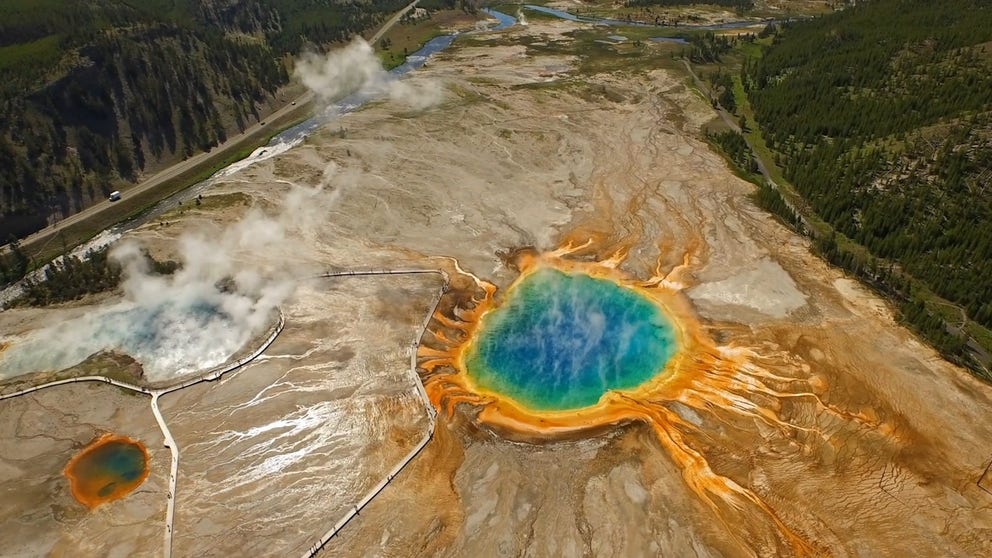7 things to know about Yellowstone National Park
This ecological preserve is much more than just a tourist attraction.
Yellowstone National Park
A look at the United States' first National Park: Yellowstone.
The 150th anniversary of the founding of Yellowstone National Park happened in 2022.
To mark the park’s birthday, here are seven things you should know about this ecology preserve that is much more than a tourist attraction.
It was the world’s first national park
Congress passed legislation that was signed in 1872 by President Ulysses S. Grant that designated land in the territories of Montana and Wyoming as Yellowstone National Park.
According to the legislation, the designation was meant to preserve the land for the "benefit and enjoyment of the people."
It wasn’t just the first national park in the U.S. It was also the first such designation in the world, according to the National Park Service.
HOW THE AMERICAN BISON BECAME A NATIONAL ICON
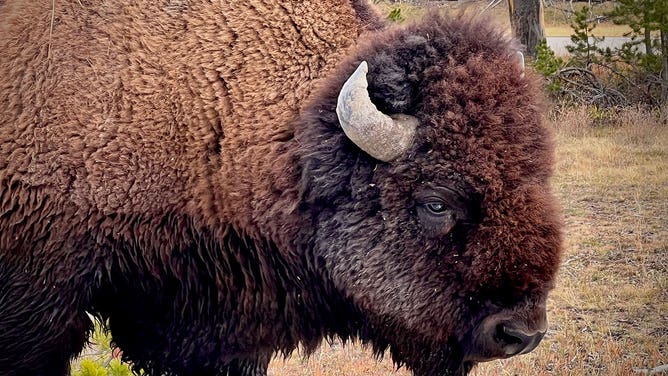
A bison is seen at Yellowstone National Park in October 2021.
(Robert Ray/FOX Weather)
People arrived in Yellowstone 11,000 years ago
While most people may think that Yellowstone is untouched by humans, people have been living and hunting in the region for thousands of years.
In fact, the first people arrived in the region about 11,000 years ago, according to the NPS.
"Although Tukudika (a.k.a. Sheep Eaters) are the most well-known group of Native Americans to use the park, many other tribes and bands lived in and traveled through what is now Yellowstone National Park prior to and after European American arrival," the park’s website reads.
According to the NPS, 27 tribes have modern and historic connections to the land and its resources.
The first European Americans didn’t arrive in the area until the 1800s. The first organized expedition to explore the region happened in 1870.
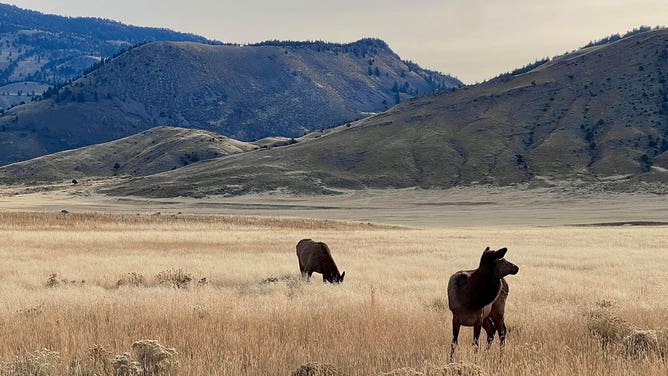
Elk graze at Yellowstone National Park in 2022.
(Robert Ray / FOX Weather)
It spans three states
Yellowstone National Park consists of 2.2 million acres that span parts of Idaho, Montana and Wyoming. It sits at the convergence of the Great Plains, Great Basin and the Columbia Plateau.
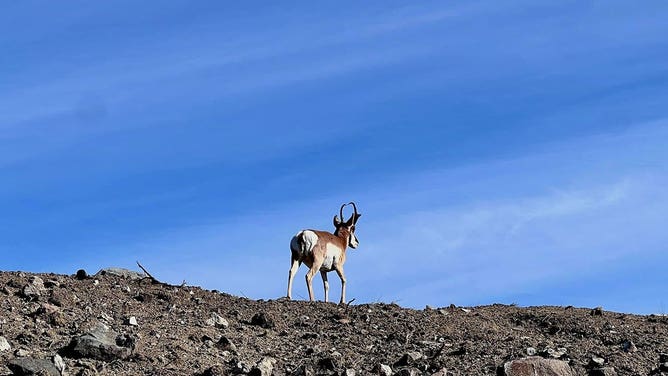
A proghorn walks along a ridge in Yellowstone National Park in 2022.
(Robert Ray / FOX Weather)
It provides water to millions
The snow that feeds streams, rivers, ponds and lakes at the park also provides water to about 60 million people downstream.
"You have this high plateau here, and because of the nature of the weather here, the huge snowpacks we get, feeds these major river systems," Rich Jehle, a ranger at Yellowstone, told FOX Weather multimedia journalist Robert Ray in October.
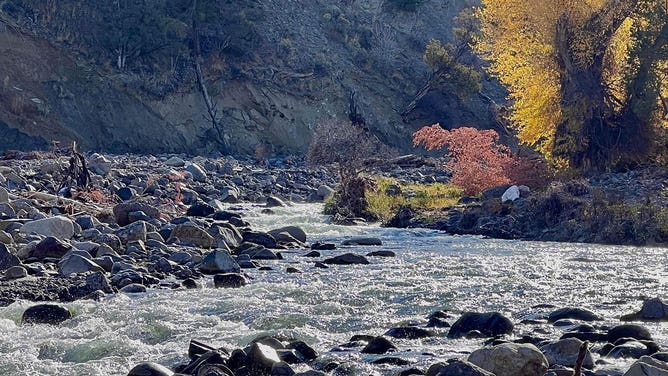
Fall foliage is seen in trees along a river bank in Yellowstone National Park in 2022.
(Robert Ray / FOX Weather)
Visitation record was set last year
According to NPS, a record 4.9 million people visited Yellowstone National Park in 2021. That was up 28% from 2020 and beat the previous record of 4.3 million set in 2016.
With more people, came more problems, however. Tour guides reported increased littering and a strain on resources at the park.
The busiest months in 2021 were May through September, according to NPS.
‘YELLOWSTONE IS AN AMAZING PLACE’: AMERICA’S OLDEST NATIONAL PARK CELEBRATES 150 YEARS
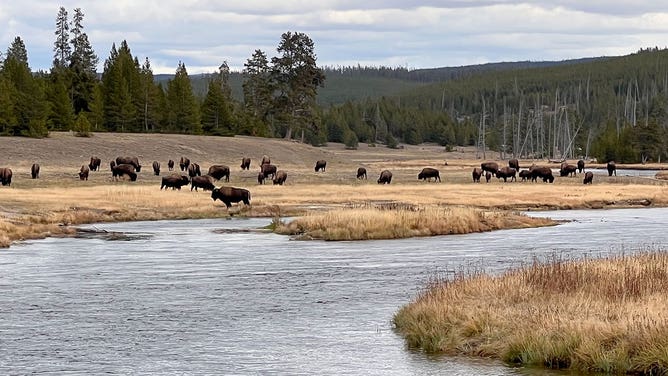
Bison graze at Yellowstone National Park in October 2021.
(Robert Ray/FOX Weather)
It’s one of the last intact ecosystem
Yellowstone National Park represents one of the last and largest intact natural ecosystems on the planet, according to NPS.
It also comprises half of the world’s active geysers, with 10,000 hydrothermal sites.
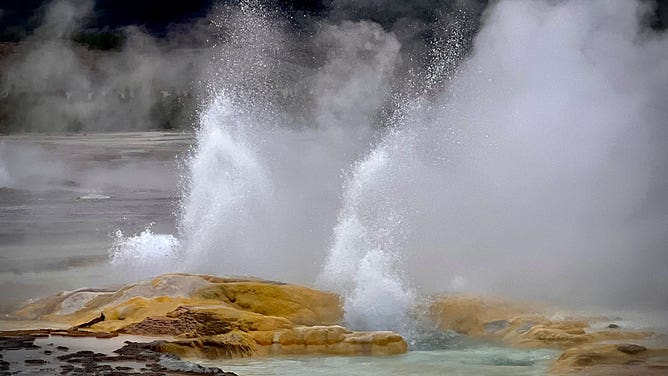
A geyser explodes at Yellowstone National Park in October 2021.
(Robert Ray/FOX Weather)
It faces challenges from climate change
A report published last year found that temperatures in the Yellowstone region have warmed by about 2 degrees Fahrenheit since the 1950s. Temperatures are expected to be 4 to 6 degrees warmer by the middle of the century.
Those warming temperatures mean less snowpack, which is vital to the annual water supply to people downstream.
"I think the biggest challenge that we are facing already, and we will continue to face in the future, is water availability," Charles Wolf Drimal, of the Greater Yellowstone Coalition, told Ray in October. "Big picture, the changes that we are seeing and the changes that we will see are increasing temperatures annually, and actually in greater Yellowstone we may see an increase in precipitation, but that will come more as rain than as snow so that means less storage later into the year."
Average annual snowfall has decreased by about 23 inches since the 1950s, according to the report.
Geological studies found that temperatures now are as warm or warmer than at any point in the past 20,000 years, according to the report.
AVERAGE TEMPERATURES EXPECTED TO CONTINUE RISING IN YELLOWSTONE AREA
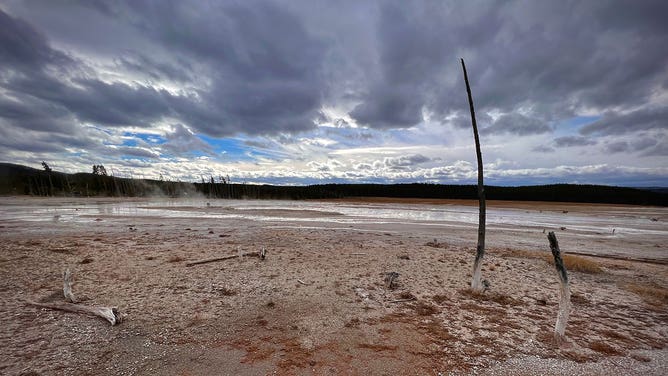
Dried portions of a lake bed are seen at Yellowstone National Park in October 2021.
(Robert Ray/FOX Weather)
